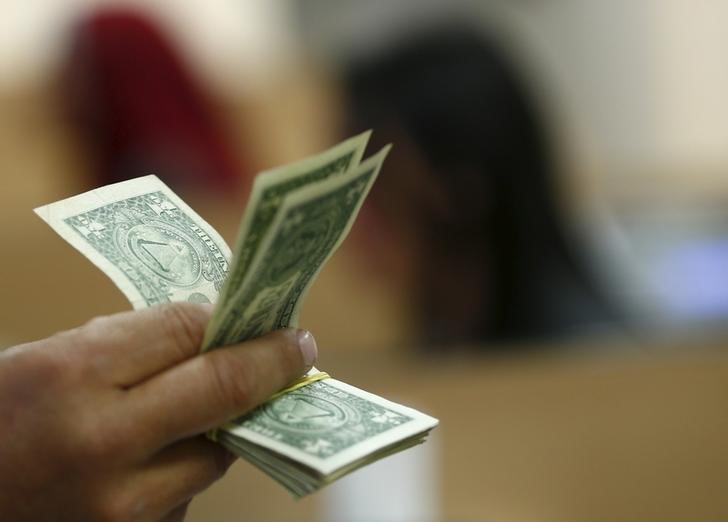 © Reuters. History Suggests a Dollar Rally in the Second Half, BofA Says
© Reuters. History Suggests a Dollar Rally in the Second Half, BofA Says(Bloomberg) — The U.S. dollar is poised to rally even more strongly than Bank of America Corp (NYSE:) had expected in the second half, the firm said, citing “historically exceptional” market and economic conditions.
The recovery from Covid-19’s economic shock has yielded stronger equity and commodity rallies and faster inflation than after previous recessions, senior foreign-exchange strategist Ben Randol wrote in a note on Monday. While share prices may now weaken, robust fiscal expansion will probably lead to tighter monetary policy, suggesting broader dollar appreciation.
“Looking forward, history suggests a 6-12-month period of equity market softness alongside higher UST yields,” Randol wrote. These are “conditions that have the potential to weigh on risk assets more generally, in turn supporting USD.”
Bank of America isn’t alone in its prediction. Speculative positioning on the dollar turned positive for the first time since May in the week ended Aug. 3, approaching a late-March peak, according to Commodity Futures Trading Commission data. The greenback has gained against eight of its Group-of-10 peers so far this year, underperforming only the British pound and Canadian dollar.
The greenback extended its advance on Monday after U.S. data on Friday showed the biggest increase in employment in almost a year.
“As markets digest the increasingly-proximate reality of Fed policy recalibration, the potential for accompanying risk asset and commodity price ‘normalization’ could emerge as a separate driver of USD gains against cyclical FX,” Randol wrote. “This would cause USD to broadly rise against FX other than JPY and potentially CHF through end-year, conceivably sharply so.”
©2021 Bloomberg
Fusion Media or anyone involved with Fusion Media will not accept any liability for loss or damage as a result of reliance on the information including data, quotes, charts and buy/sell signals contained within this website. Please be fully informed regarding the risks and costs associated with trading the financial markets, it is one of the riskiest investment forms possible.
